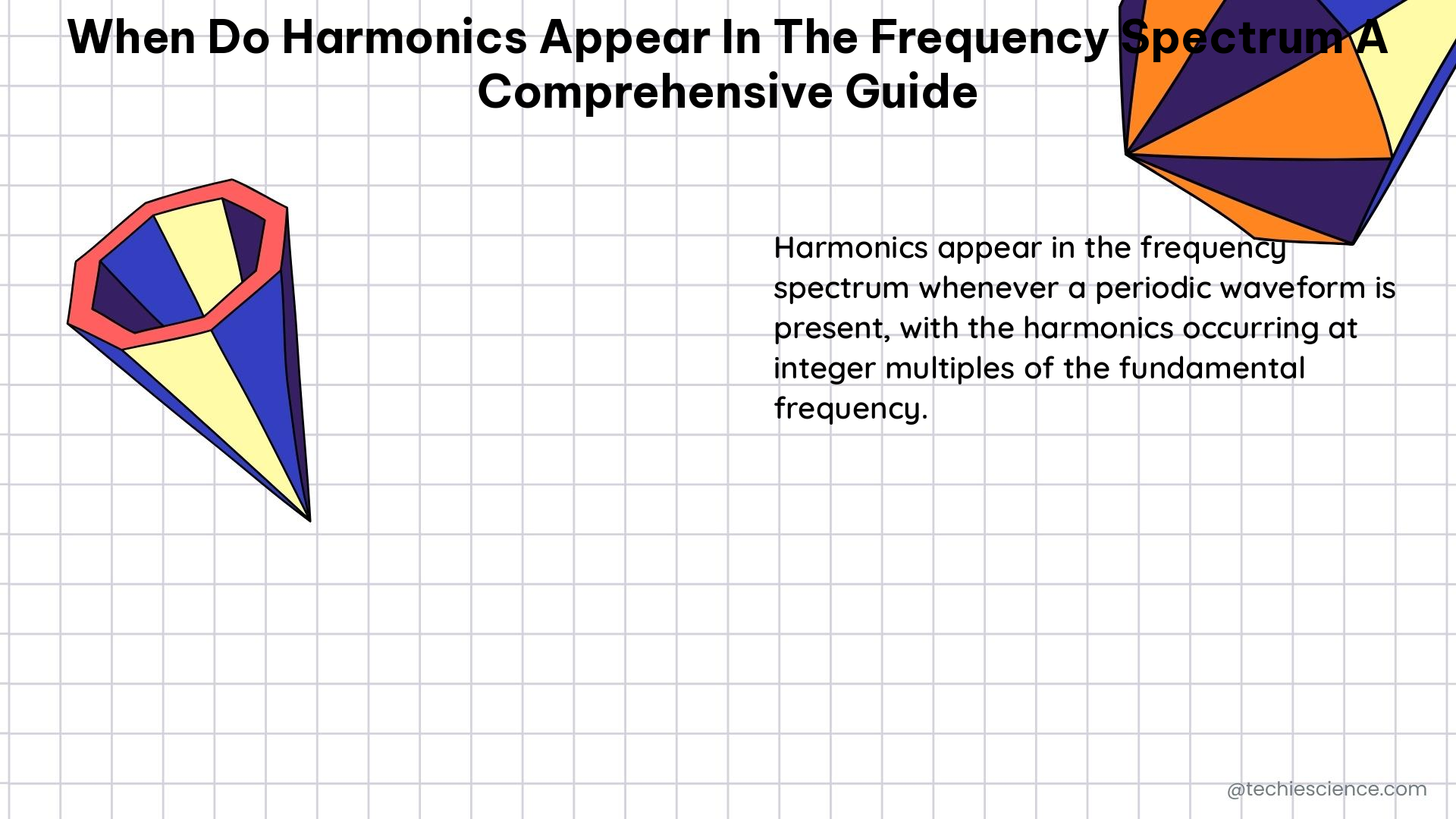Harmonics are a fundamental concept in signal processing and audio analysis, playing a crucial role in understanding the behavior of complex signals. This comprehensive guide delves into the intricacies of when harmonics appear in the frequency spectrum, providing a deep dive into the technical specifications and unique perspectives on this topic.
Understanding Harmonics
Harmonics appear in the frequency spectrum as integer multiples of the fundamental frequency. They are a result of the non-linearities in a system and can be used to analyze and understand the behavior of complex signals. In the context of sound and music, harmonics are responsible for the timbre or quality of a sound, in addition to its pitch.
The relationship between the fundamental frequency and its harmonics can be mathematically expressed as:
f_n = n * f_1
where f_n is the frequency of the nth harmonic, n is the harmonic number, and f_1 is the fundamental frequency.
For example, if the fundamental frequency is 100 Hz, the first three harmonics would be 100 Hz, 200 Hz, and 300 Hz, respectively. These relationships are demonstrated in the table below, which shows the frequency ratios between the harmonics for a guitar string:
| Harmonic Number (n) | Frequency Ratio (f_n/f_1) |
|---|---|
| 1 (Fundamental) | 1.0 |
| 2 | 2.0 |
| 3 | 3.0 |
| 4 | 4.0 |
| 5 | 5.0 |
| 6 | 6.0 |
| 7 | 7.0 |
| 8 | 8.0 |
| 9 | 9.0 |
| 10 | 10.0 |
Harmonic Spectrum Analysis

In the context of audio signals, harmonics can be extracted and visualized using techniques such as the harmonic spectrum. This involves estimating the fundamental frequency (f0) at each time step and extracting the energy at integer multiples of f0, the harmonics. This representation can be used for resynthesis or downstream analysis.
The harmonic spectrum can be computed using the following steps:
- Estimate the fundamental frequency (f0) of the audio signal at each time step.
- Compute the energy at integer multiples of f0 to obtain the harmonic spectrum.
- Visualize the harmonic spectrum, where the x-axis represents the harmonic number, and the y-axis represents the energy or amplitude of each harmonic.
This harmonic spectrum representation can provide valuable insights into the structure and characteristics of the audio signal, as the presence and relative amplitudes of the harmonics directly influence the timbre or quality of the sound.
Factors Affecting Harmonic Content
The number of harmonics present in a signal can vary depending on the system and the signal itself. Several factors can influence the harmonic content of a signal:
-
Waveform Shape: The shape of the waveform can determine the number and relative amplitudes of the harmonics. For example, a square wave has a rich harmonic content, with significant energy in the odd harmonics, while a sine wave has only the fundamental frequency.
-
Nonlinearities: Nonlinearities in the system, such as those introduced by amplifiers, distortion effects, or physical phenomena, can generate additional harmonics.
-
Excitation Mechanism: The way the signal is generated or excited can also affect the harmonic content. For instance, the plucking or bowing of a string instrument can produce different harmonic structures compared to a wind instrument.
-
Resonance and Filtering: The presence of resonant frequencies and filtering in the system can selectively amplify or attenuate certain harmonics, shaping the overall harmonic content.
-
Instrument Design: In the case of musical instruments, the design and construction of the instrument can influence the harmonic content of the produced sound.
Understanding these factors is crucial for analyzing and manipulating the harmonic content of signals, particularly in the context of audio processing and synthesis.
Applications of Harmonics
Harmonics have a wide range of applications beyond the realm of sound and music. Some notable applications include:
-
Electrical Engineering: In power systems, harmonics can cause problems such as increased heating in transformers and motors, as well as interference with communication systems. Analyzing and mitigating harmonics is crucial for maintaining power quality and system efficiency.
-
Physics and Fourier Analysis: The study of harmonics is closely related to the field of Fourier analysis, which deals with the decomposition of signals into their frequency components. This connection is fundamental in various areas of physics, such as wave propagation and quantum mechanics.
-
Signal Processing and Analysis: Harmonic analysis is a valuable tool in signal processing, allowing for the extraction of meaningful information from complex signals. This has applications in areas like speech recognition, audio processing, and vibration analysis.
-
Musical Synthesis and Instrument Design: In the realm of music and audio, the understanding of harmonics is essential for the design and synthesis of musical instruments, as well as the creation of realistic and expressive digital sounds.
-
Biomedical Engineering: Harmonics can be used in the analysis of biological signals, such as those generated by the human body, for applications like heart rate monitoring and neural activity analysis.
By exploring the technical specifications and unique perspectives on harmonics, this comprehensive guide provides a solid foundation for understanding their role in the frequency spectrum and their widespread applications across various fields.
References
- Harmonic Frequency – an overview | ScienceDirect Topics
- Fundamental Frequency and Harmonics – The Physics Classroom
- Harmonic spectrum — librosa 0.10.0 documentation
- Intro. to Signal Processing:Harmonic analysis – TerpConnect
- Harmonics – The Digital Signal Processing (DSP) Guide

The lambdageeks.com Core SME Team is a group of experienced subject matter experts from diverse scientific and technical fields including Physics, Chemistry, Technology,Electronics & Electrical Engineering, Automotive, Mechanical Engineering. Our team collaborates to create high-quality, well-researched articles on a wide range of science and technology topics for the lambdageeks.com website.
All Our Senior SME are having more than 7 Years of experience in the respective fields . They are either Working Industry Professionals or assocaited With different Universities. Refer Our Authors Page to get to know About our Core SMEs.